[/caption]
SpaceX announced that today’s (Mar 13) test firing of all 9 Merlin first stage engines was successful at Pad 40 at Cape Canaveral. This is a major milestone towards the planned inaugural first flight of the Falcon 9 rocket which SpaceX is building. This success follows an aborted test firing attempt on Thursday (Mar 11) and several other delays due to poor weather at the Cape this week.
The Falcon 9 will play a crucial role in resupplying cargo for the International Space Station after the scheduled retirement of NASA’s Space Shuttle program set for late this year or early 2011.
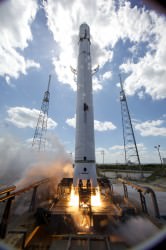
The first actual Falcon 9 blast-off is set for no earlier than April 12 between 11 AM and 3 PM
Falcon 9 is a two stage, liquid oxygen and rocket grade kerosene (RP-1) powered launch vehicle. It uses the same engines, structural architecture (with a wider diameter), avionics and launch system as the Falcon 1
Here is the official announcement I received from SpaceX this afternoon:
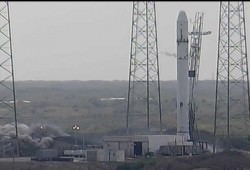
“Just prior to engine ignition, the pad water deluge system was activated providing acoustic suppression to keep vibration levels within acceptable limits. The test validated the launch pad propellant and pneumatic systems as well as the ground and flight control software that controls pad and launch vehicle configurations. The completion of a successful static fire is the latest milestone on the path to first flight of the Falcon 9 which will carry a Dragon spacecraft qualification unit to orbit.”
Under NASA’s Commercial Orbital Transportation Services (COTS) program, SpaceX plans three launches of the Falcon 9 rocket and Dragon spacecraft this year to demonstrate delivery of cargo to the ISS as well as returning cargo to Earth. The entire schedule moving forward is dependent on a successful inaugural launch.
NASA awarded SpaceX a $1.6 billion contract to conduct a minimum of 12 flights and deliver at least 20,000 kg of cargo to the ISS. An option for additional missions could increase the cumulative total contract value to $3.1 billion.
The 180 ft tall Falcon 9 will be capable of lifting approximately 11 tons to low Earth orbit (LEO) and in excess of 4.5 tons to Geosynchronous Transfer Orbit (GTO).
Update: SpaceX photos added
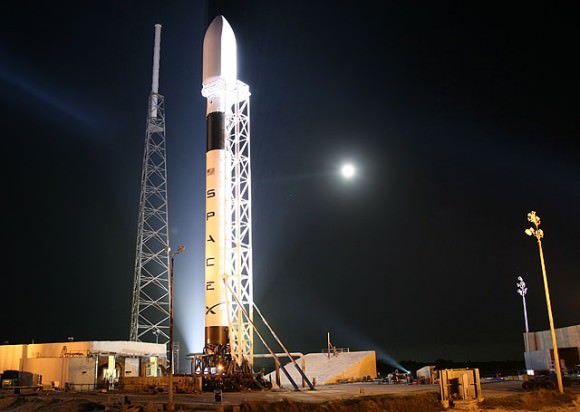
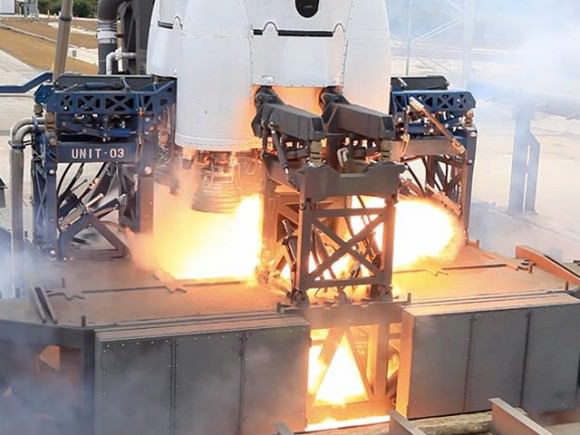

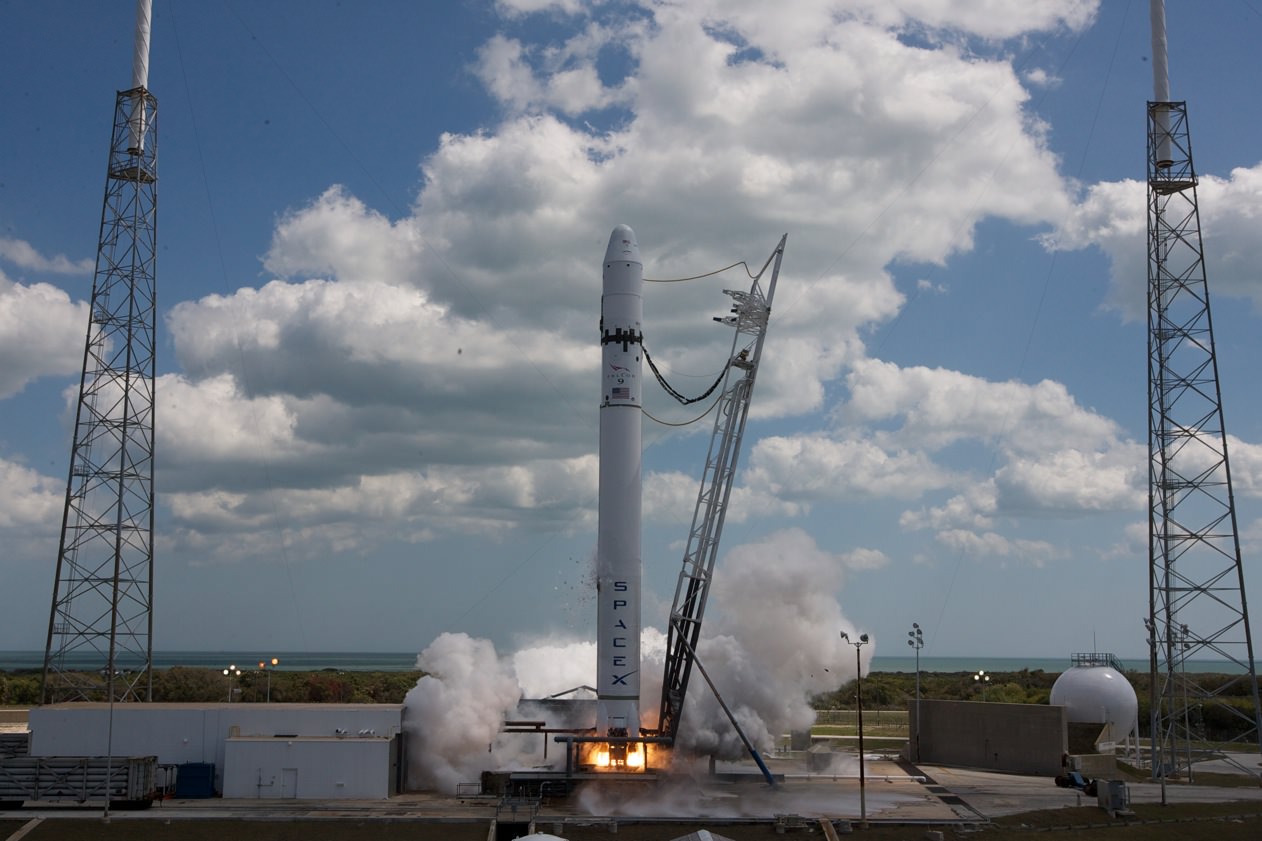
Woot! I’m glad it went alright:).
With projects like the SpaceX Falcon-9 and Virgin Galactic Spaceship One, it’s great to witness how space is opening to an emerging private sector. Good luck for the April launch, SpaceX.
OK, so that’s a date, Space-X, me and the stars … Hey! My calender sez it’s on Yuri’s night! Wouldn’t that be awesome if it worked out!?
@Torbjorn
Somewhere Yuri is yawning about an unmanned spaceflight going up on “his night” 😉
GO Falcon 9!
Am curious… The top 3 images appear to have a different fairing than the 4th image? Is the 4th image from another version of the Falcon? i.e. with the Dragon module mounted atop the rocket? Or is it an optical illusion that the fairing looks like it has a larger diameter than the rocket body in the 4th image?
I note also the 4th image has a different paint job on the rocket body… i.e. the black painted section.